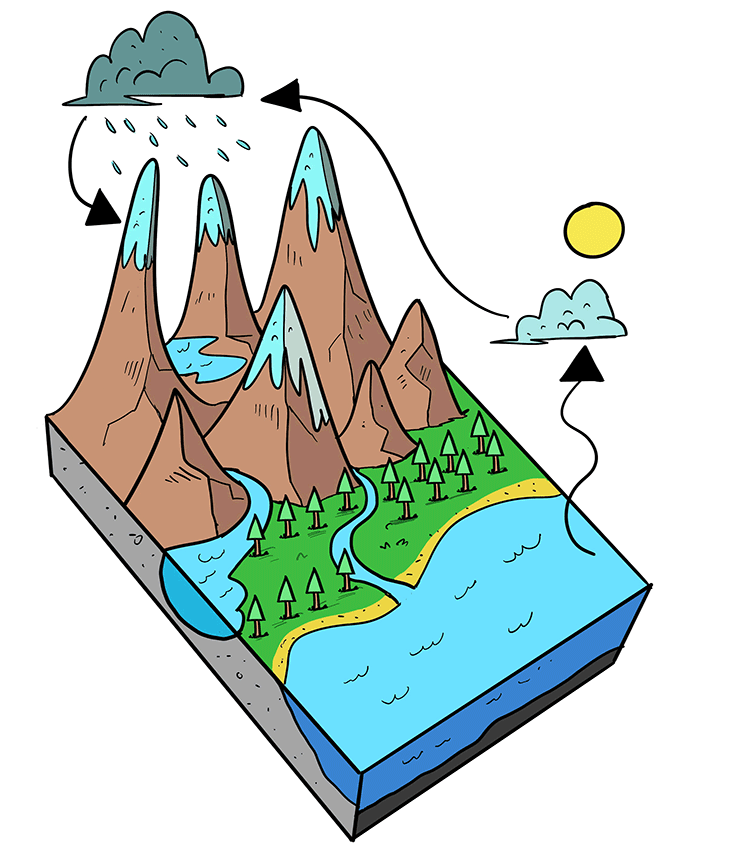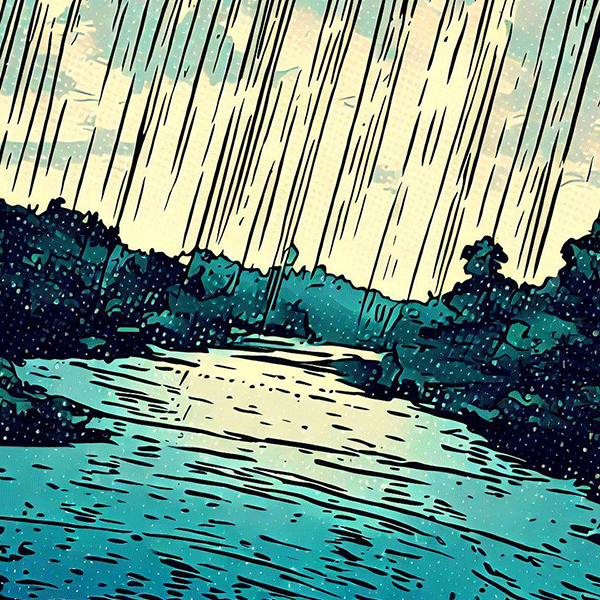What’s the Water Cycle?
Let’s talk about an amazing thing that happens on our planet. It’s called the water cycle, and it’s like a big, round trip that water takes all over Earth. It’s also sometimes known as the hydrologic cycle.
The water you drink from your glass today could have been part of a cloud a few days ago, or even a glacier thousands of years ago! Crazy, right? This is all because of the water cycle, which has four main steps: evaporation, condensation, precipitation, and collection.

The Stages of the Water Cycle
Here’s what happens in each step:
- Evaporation: This is when water changes from a liquid to a gas, called water vapor. The sun heats up water in rivers, lakes, and oceans, and turns it into vapor that rises into the air.
- Condensation: As the water vapor goes up into cooler parts of the sky, it turns back into tiny liquid water droplets. This is condensation. When lots of these droplets come together, they form clouds.
- Precipitation: Sometimes, the water droplets in clouds get too heavy and fall back down to Earth. This can be as rain, snow, sleet, or hail, and it’s called precipitation.
- Collection: After the water falls, it can do a few things. Plants might soak it up, it might seep into the ground to fill up underground water reserves, or it might flow over the ground until it reaches rivers, lakes, or oceans. This is called collection.
Why Does the Water Cycle Matter?
The water cycle is super important for life on Earth. It moves water around our planet so plants, animals, and people have the water they need. It also helps control Earth’s temperature and weather.
So next time you take a drink of water or watch it rain, remember the incredible trip that water takes on its round trip around the Earth – thanks to our planet’s very own recycling system, the water cycle!
